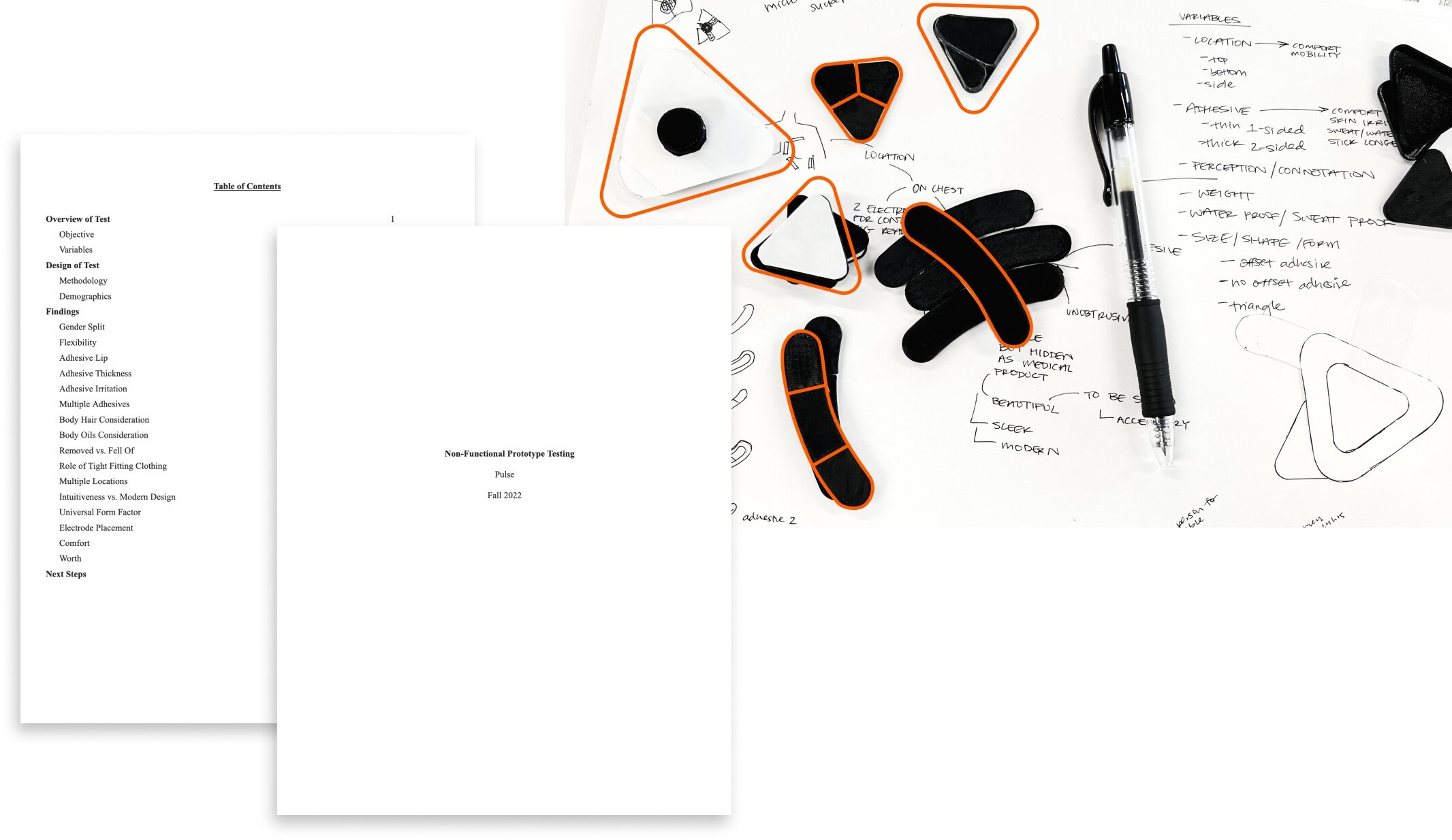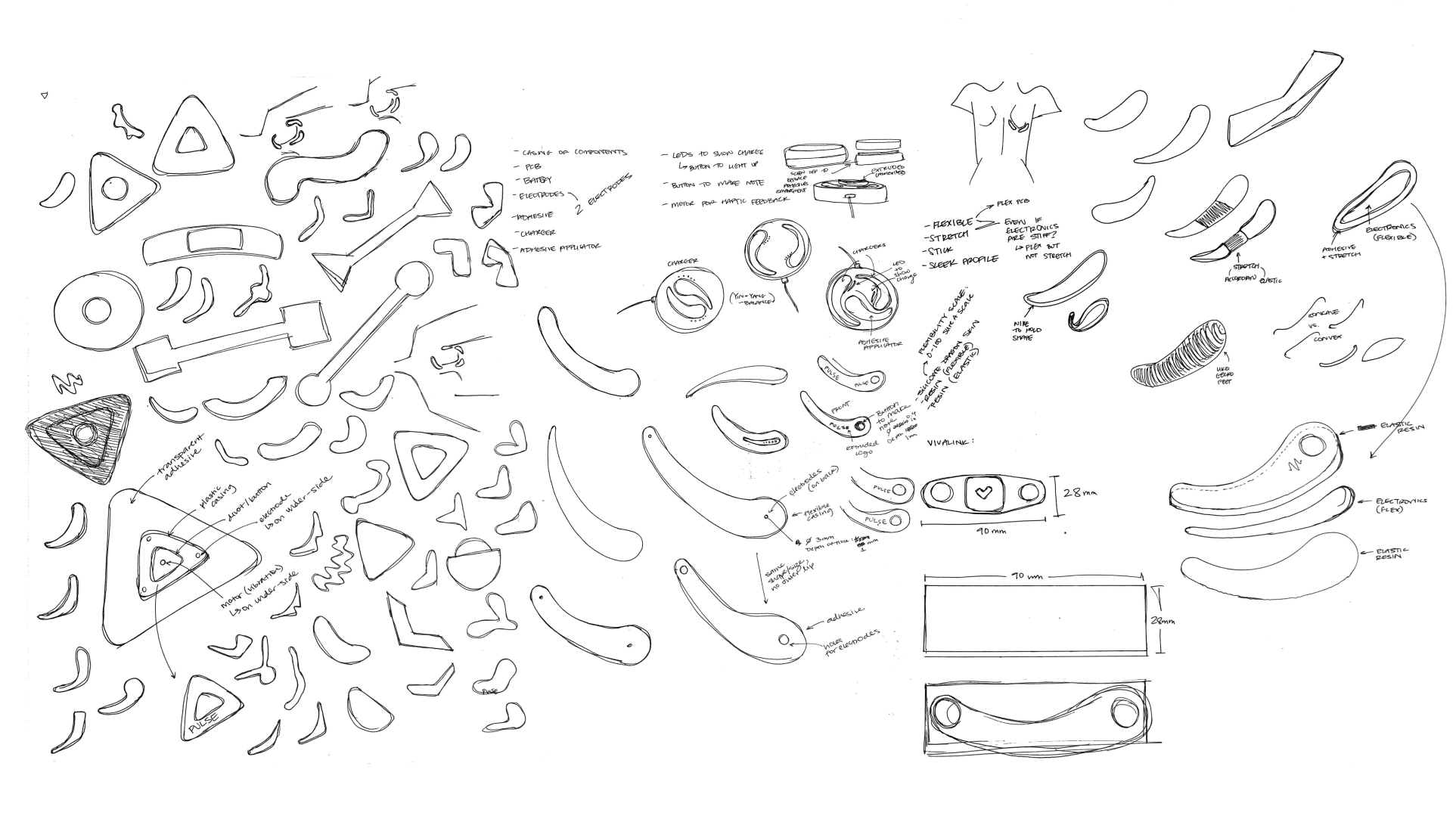Pulse:
cardiac health
wearable
Research & Strategy
Physical Prototyping
Incubated at MIT Entrepreneurship Program 2017
Revisited at USC Iovine & Young Academy 2019-23
1
problem identification
I trained on the professional track for ballet for 12 years until I was diagnosed with the genetic heart condition that is the leading cause of sudden death in high-performing athletes.
I was told to stop dancing because at that level of intensity, there was a high risk of sudden cardiac arrest. What I didn’t know was what intensity was still okay.
I lack visibility into how my physical activity impacts my heart activity.
2
primary research
This need has been overwhelmingly validated through user research of 200+ athletes, patients with relevant heart conditions, and health-conscious individuals, conducted through 1:1 phone interviews, surveys distributed amongst online groups and forums, and field studies.
3
define problem
Active people, especially those with heart conditions, lack visibility into how their physical activity impacts their heart activity. This lack of visibility is an obstacle to living active and full lives.
4
solution
A sleek, consumer-facing wearable patch focused on cardiac health that provides real-time feedback and long-term analytics based on a type of data traditionally used in the medical industry.
The feedback informs users about how their lifestyle choices and physical activity impact their heart activity.
Pulse increases visibility, preventative action, and quality of life for our users.
advanced research
5
Hypertrophic Cardiomyopathy –– genetic mutations, muscle cell behavior, heart structure.
Heart rhythms that lead to Sudden Cardiac Arrest –– progression, predictive markers.
scientific research
technical Research
Hardware –– electrode placement, necessary components, capabilities & constraints of the PCB.
Software –– existing datasets, arrhythmia detection & prediction algorithms.
competitive Research
Compared 200+ companies & projects on a detailed assessment of offerings.
Design Research
Wearable (hardware) –– materials, types of adhesives, body placement.
Mobile app (software) –– existing health/fitness apps.
user Research
Conducted continuous interviews, surveys, and field studies to test ideas & assumptions.
6
form development
prototypes of shape, flexibility, & adhesive
Tested with 20+ participants
View findings of test
form
explorations
3d models
(charger + patch)
Modeled in SolidWorks
3d printed form prototype
Flexible Resin
Design criteria
Comfortable
You forget it’s there.
Unobtrusive
Your movement is not disrupted.
Intuitive
You can put it on with your eyes closed.
Inconspicuous
You can’t see it. Or you can but it’s disguised.
Testing
Wearability
How does the wearable respond to different movement?
How does the wearable respond to variations in skin surface?
Locations
How many locations lead to good reading?
Which location of the wearable is best?
Feedback Loops
When exactly should the wearable alert you?
What kind of alert is gentle but clear?
What is the expected response to an alert?
7
hardware development
I built multiple hardware prototypes using Arduino that read the wearer’s ECG heart rhythm data, provide haptic feedback based on the user’s heart activity and their safe thresholds, and allow the user to engage with their data.
8
software development
I worked with technical teammates to develop an AI algorithm to predict heart rate progression in the next 10 seconds, as an initial step to developing our irregular heart rhythm prediction algorithm.
11
advisement
Thank you to the medical, technical, business, and design experts who have been incredibly generous with your time, feedback, and connections, including those from the following organizations: American Heart Association, AHA Center for Health Technology & Innovation, IDEO Health, Vivalink, Edwards Lifesciences, USC AMI Institute of Biomedical Engineering, USC Keck School of Medicine, USC Jimmy Iovine & Andre Young Academy, MIT Media Lab, Carnegie Mellon University Biomedical Engineering, Duke Biomedical Engineering, Johns Hopkins ARVD/C Center, University of Michigan Frankel Cardiovascular Center, Stanford Division of Cardiovascular Medicine, and Stanford d.School.
12
recognition
USC New Venture Seed Competition | Top 6 of 280 Undergrad, Grad, Alumni, & Faculty Teams – 2023
USC Discovery Scholar Distinction – 2023
USC Iovine & Young Academy Prize | 1st Place – 2022
The Talon Feature Article – 2019
i.Invest National Youth Business Competition | 1st Place – 2018
Diamond Challenge Entrepreneurship Competition | States 1st Place, Global Finalist – 2018
Innovation Showcase TV – 2017
MIT Launch Grant Recipient – 2017













